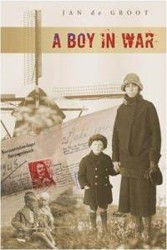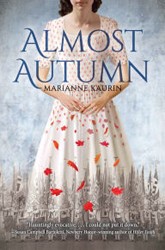Fifteen-year-old Kalinka is completely alone on the vast Ukranian steppe, her family and friends just more unnamed victims of the madness of the relentless Nazi killing machine. She finally finds refuge on a nature preserve, where she bonds instinctively with some rare, wild Przewalski horses, possibly the last of their breed. The elderly Max is also alone, the sole caretaker at the very same nature preserve. He is completely unaware of Kalinka’s existence, and Kalinka prefers it that way. When German soldiers arrive at the preserve, Max lives in an uneasy truce with them for a while, until the Reich decides that the endangered horses are a “biologically unfit species.” In order to prevent them from “contaminating” the bloodlines of superior horse breeds, the Germans carry out an exuberant hunt one morning, shooting the Przewalskis in cold blood. One mare and one stallion manage to escape the carnage, and Kalinka finds them. It is then she makes her presence known to Max, asking for his help in tending their wounds and then hiding them. Of course, she and her yellow star are equally in need of hiding from the Nazis, and Max willingly finds a way to protect her. The Germans, however, are suspicious, and it’s clear that both girl and animals must be immediately on their way. The story’s suspense turns on the question of who will survive: girl, man, horses. Kalinka seems younger than her fifteen years (even given the trauma she’s been through), and the story, despite its Holocaust setting, might be better for slightly younger readers than the YA audience it is advertised for. But it is an engrossing story about an unfamiliar Holocaust chapter, one that pits the brutality of war against the inextinguishable compassion of individuals. Well worth reading. Recommended for ages 10 – 15.
Related Content:
- Holocaust Fiction Reading List
- The Boy in the Striped Pajamas by John Boyne
- The Winter’s Journey of My Youth: A Memoir by Helen Studley



